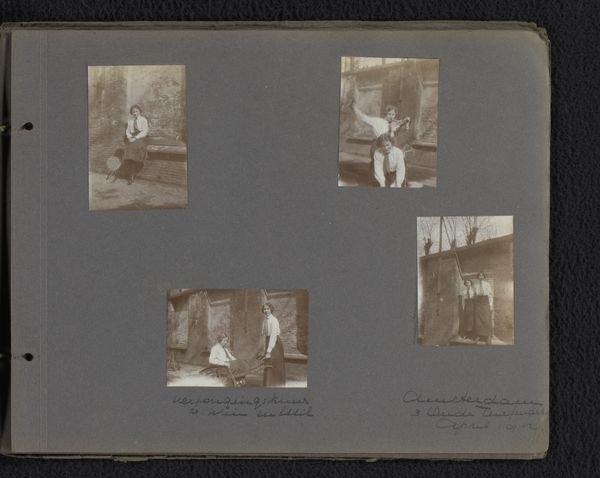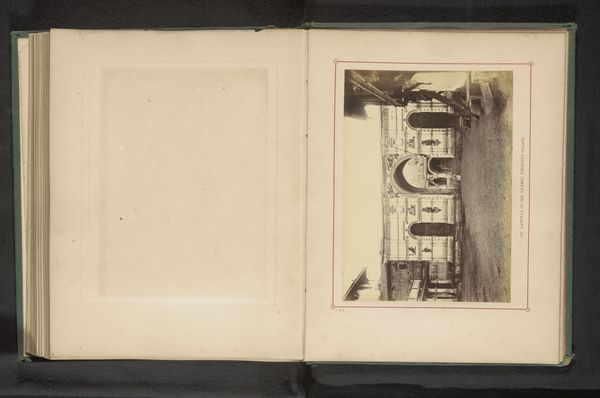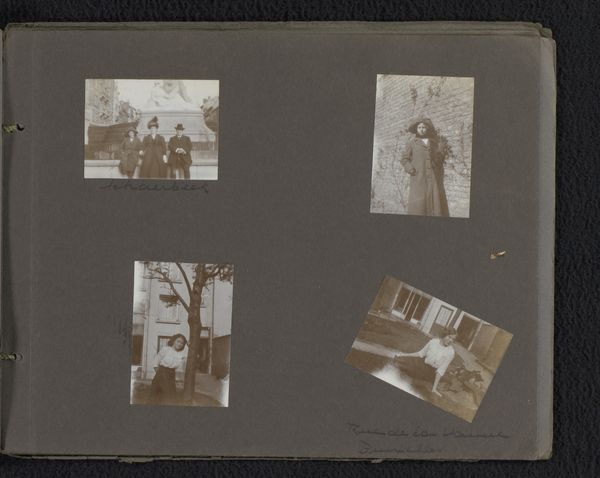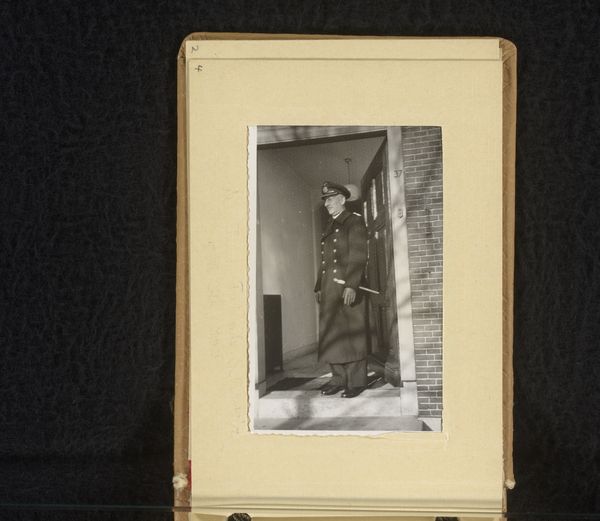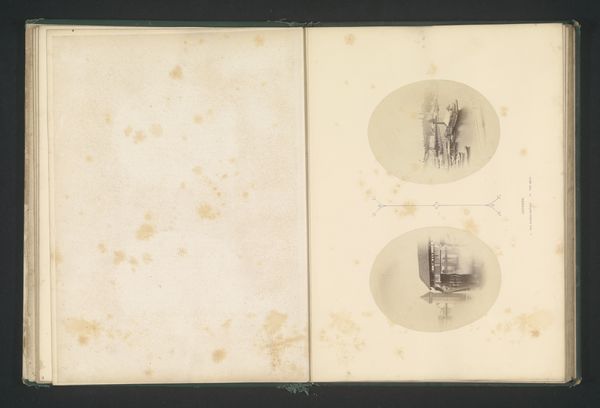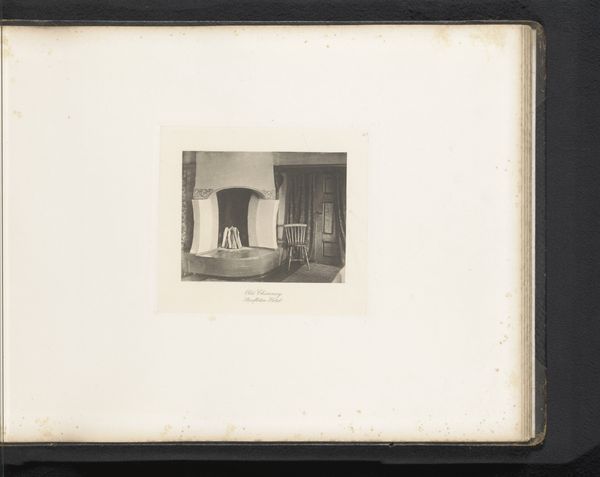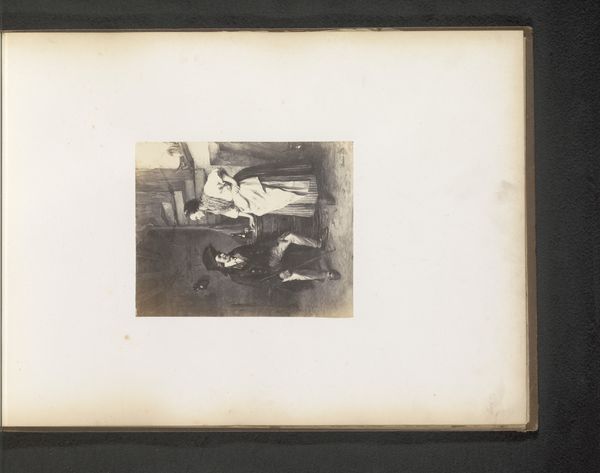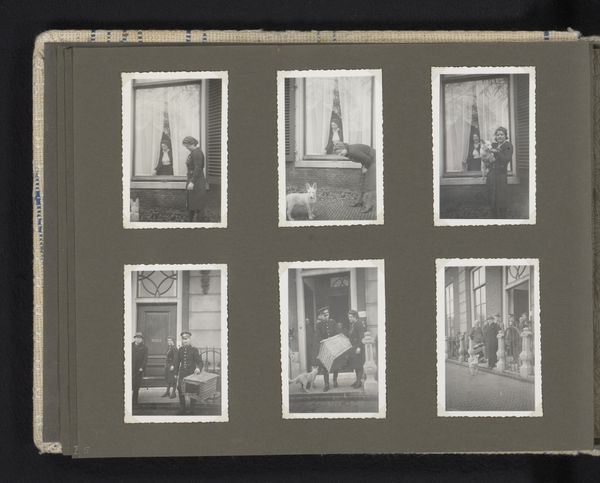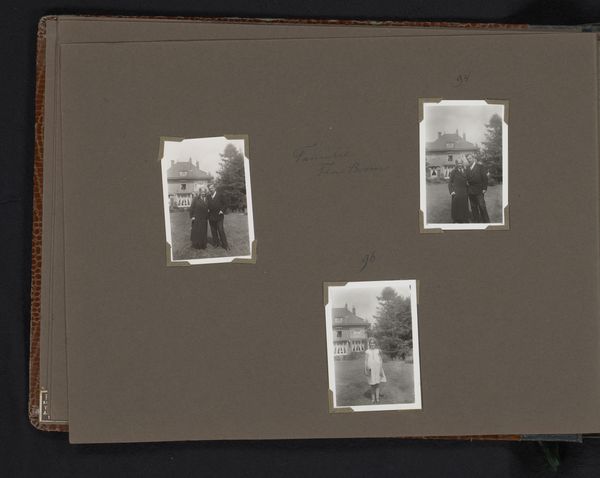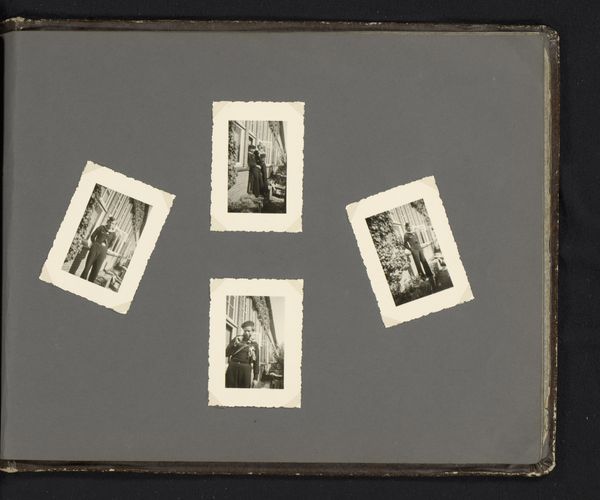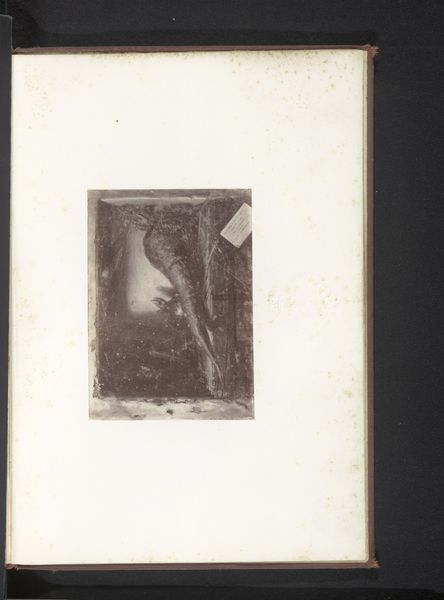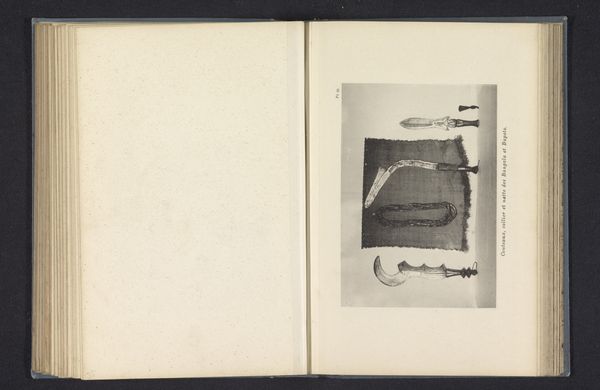
photography
#
portrait
#
pictorialism
#
photography
#
genre-painting
Dimensions: height 240 mm, width 300 mm
Copyright: Rijks Museum: Open Domain
Curator: This photograph, "Unknown Woman in a Doorway," was captured in 1912. The photographer is listed as Carolina (Loentje) Frederika Onnen, and we know this work is photographic, characterized by the pictorialist style. Editor: It's immediately striking. There’s something quite staged about it, almost cinematic. The sepia tones lend it a dreamy, old-world atmosphere, and the woman’s poised stance seems so intentional. Curator: Right, that's very much a consequence of pictorialism's impact. Beyond merely documenting reality, these photographers used various printing techniques and soft focus lenses to create an image that looks painterly. What strikes me is the context, these pictures were most likely contact prints, pasted on to this photograph album page directly by Carolina Onnen herself, offering a crucial material trace. Editor: I’m drawn to the ambiguity, though. We're seeing an intimate portrait—or is it genre painting in the making? It has that frozen quality that a lot of photographs have from that period, and it speaks volumes about how we constructed ideas of personhood at the time. Curator: Exactly. The socio-cultural landscape significantly shapes the interpretation of a simple photograph. The labor involved, from developing the glass negatives to albumen printing, speaks to a specific class and cultural experience. Editor: And what does that doorway signify? Is she entering or leaving? Perhaps the real subject is the in-between space and those blurred thresholds of daily life. Curator: The framing emphasizes that tension—a delicate negotiation of private and public. Museums, too, operate within those spaces. They create narratives through curated selection and presentation, defining whose stories get told, shaping the past that we know. Editor: Absolutely. It also reminds us that museums aren’t neutral. They present stories from specific angles and power structures influence which objects, photographs, or narratives find their way into the collection in the first place. It almost prompts us to consider what we do know against what we will never be able to. Curator: These images, with their carefully staged composition and materiality, offer unique perspectives into the construction of early 20th-century imagery, artistic agency, and individual presentation. Editor: In short, these everyday encounters frozen in time reflect and reflect *on* a defining sociohistorical moment. They provide so much information, when given our careful thought and time.
Comments
No comments
Be the first to comment and join the conversation on the ultimate creative platform.
